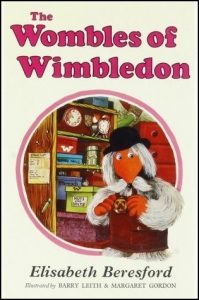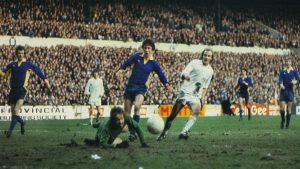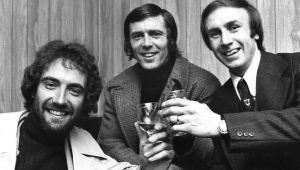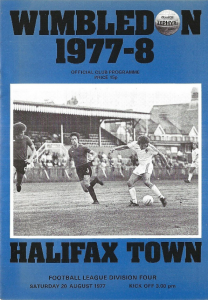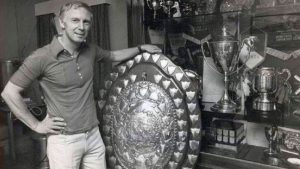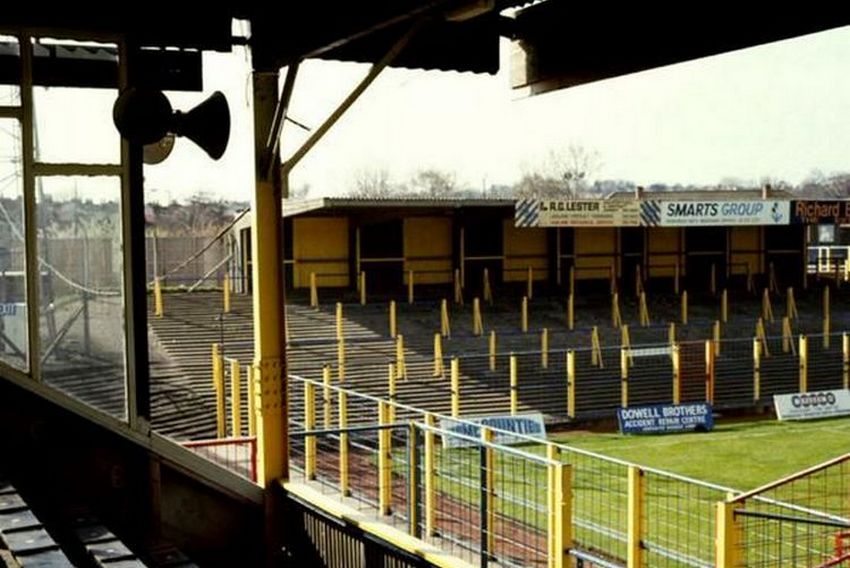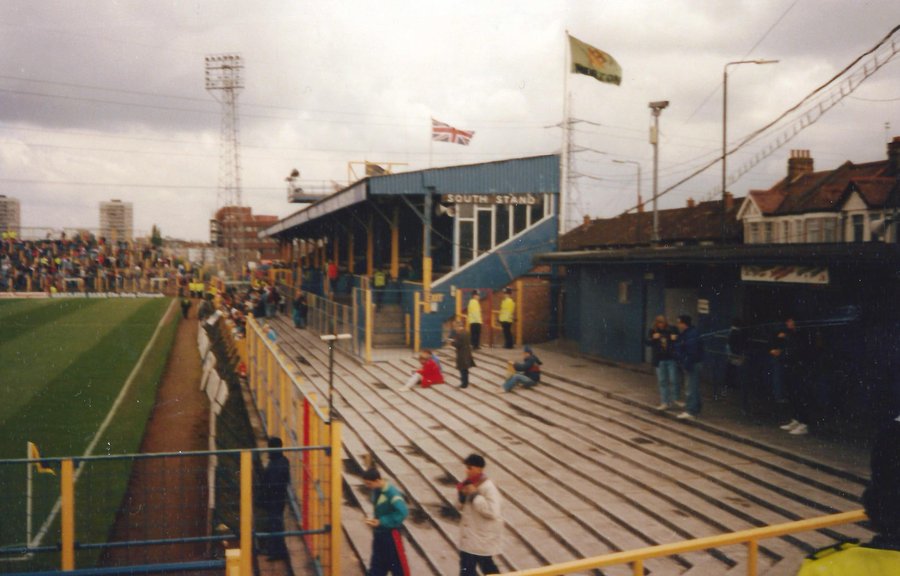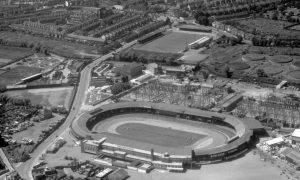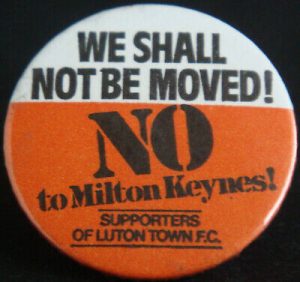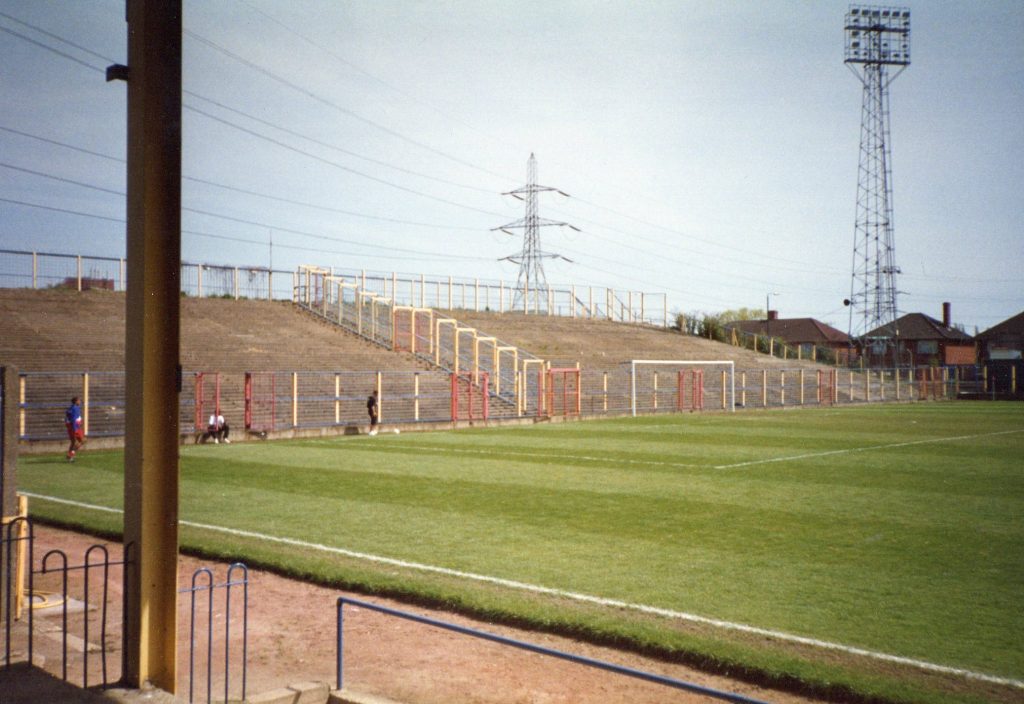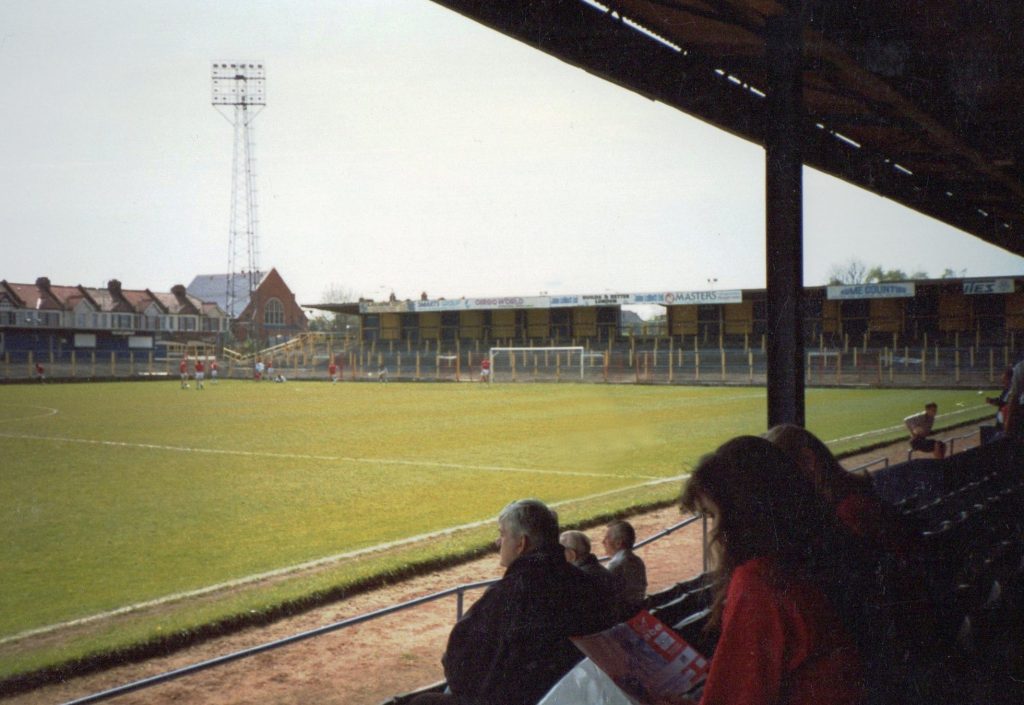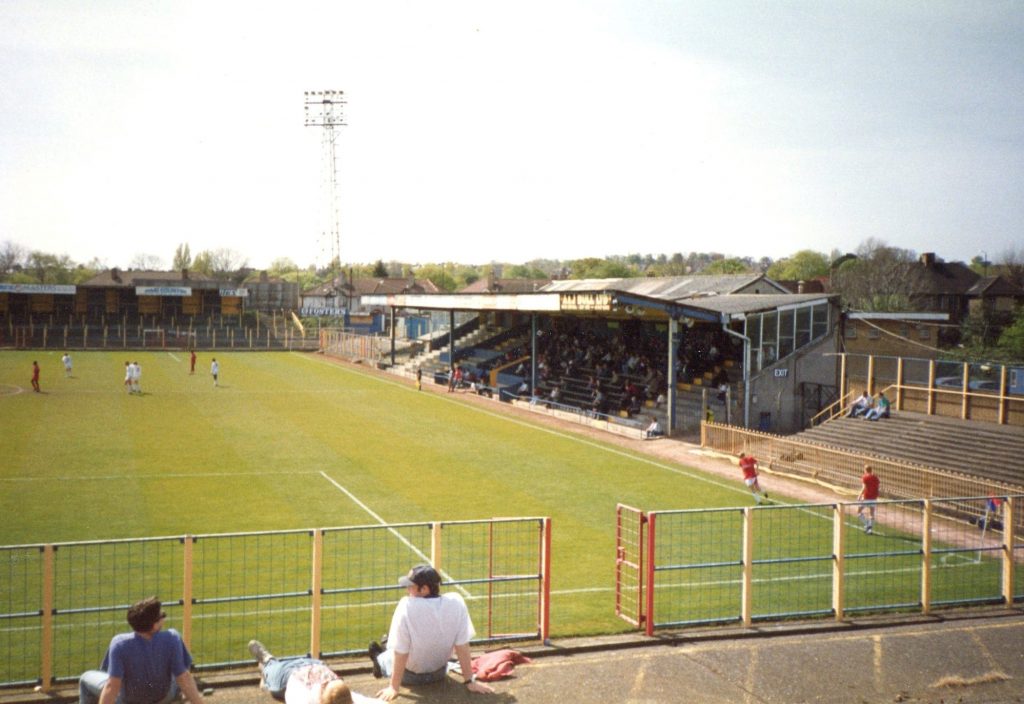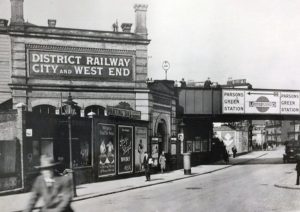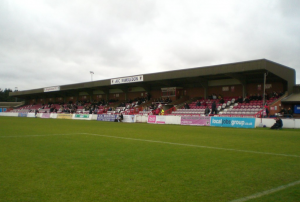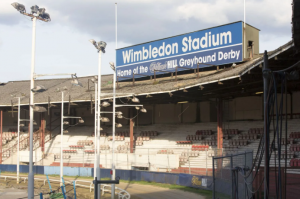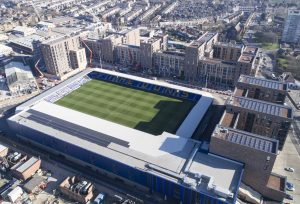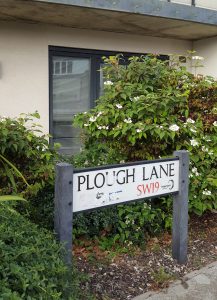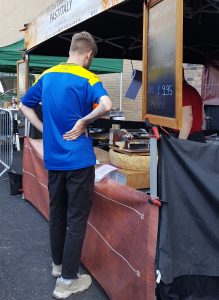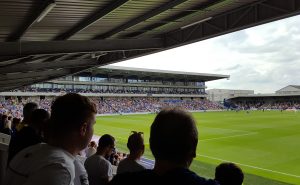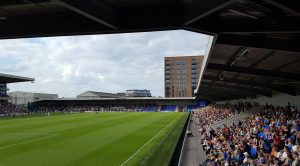Wimbledon 0 Plymouth Argyle 1
League 1
Saturday 18 September 2021
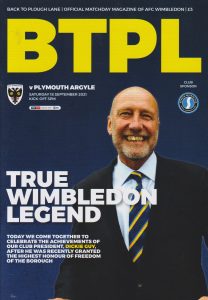
good Guy
The context
A new ground for both of us. Plough Lane’s early games – watched only by journalists – had taken place behind Covid-induced closed doors (I never understood why reporters weren’t also expected to watch live streams, but that’s one for another day). Its initial match with spectators was last July’s test event against a young Liverpool side, and Bolton subsequently became the first competitive visitors in front of fans.
The history
Today’s fixture celebrated Dickie Guy’s newly-awarded freedom of Merton. This ceremony took place beforehand. I’m not sure exactly what privileges it bestows; you’d at least expect free cinema tickets, or grazing rights on the Common. Club president Guy made almost 600 Wimbledon appearances in eleven years – mainly during their non-League days – which saw him only miss one match between January 1970 and August 1977. He is particularly remembered for saving Peter Lorimer’s Elland Road penalty to earn them a 1975 FA Cup fourth round replay against Leeds.
Allen Batsford’s side defeated Bracknell, Maidenhead, Wokingham, Guildford & Dorking, Bath and Kettering in that season’s competition. A second-half Mick Mahon drive at Burnley then secured the first away win by any non-League team against First Division opposition. Leeds proved considerably more resilient, but still relied on Dave Bassett’s cruel own-goal to put them through in front of 45,000 in the Selhurst Park replay.
That Cup run – and its attendant publicity – would ultimately deliver League football. Three successive Southern League titles helped, of course, but national headlines always won votes; fortunately, too, re-election candidates Workington played in the middle of nowhere and had been enduring a particularly miserable time. Wimbledon made steady progress, yo-yoing initially between both lower divisions before four promotions in five seasons secured top flight status just eleven years later.
Batsford’s previous club Walton & Hersham had famously beaten Brian Clough’s Brighton 4-0 in a FA Cup game. Five key players – Bassett, Dave Donaldson, Billy Edwards, Roger Connell and Kieron Somers – followed him to Wimbledon. He eventually left after quarreling with chairman Ron Noades, going on to build another formidable semi-pro team at Wealdstone. Bassett absorbed much of his uncompromising philosophy and would be manager when Wimbledon reached Division One.
- newest
- oldest (Vince Taylor)
Their modest home on Plough Lane’s top corner changed little over the years. Its newest structure was a small covered terrace dating from 1960. Both side stands went up soon after forerunners Wimbledon Old Centrals moved in; one previously belonged to Clapton Orient. The main stand paddock later gained both roof and seats, while various post-Bradford safety works raised capacity to 19,000. This basic layout survived until Lord Justice Taylor’s report forced some difficult decisions.
Rebuilding those extensive open terraces would have been prohibitively expensive. Development plans for the nearby greyhound stadium never materialised, and Wimbledon abandoned Plough Lane to groundshare with Crystal Palace (where coincidentally Noades was now chairman). New owner Sam Hammam proposed various bizarre relocation schemes – one of which involved playing in Dublin – but his equally cynical Norwegian successors decided their best bet lay sixty miles away at Milton Keynes.
This thinking was hardly innovative. Greedy eyes habitually saw the Buckinghamshire new town as a football Nirvana of cheap land and potential converts. Scorning such traditional approaches as developing their own team, its ambitious development corporation had already attempted to franchise Charlton, Luton and – in Noades’ time – Wimbledon themselves. Local planners now got busy while the FA cheerfully stood aside.
- sombre (Vince Taylor)
A sombre Plough Lane staged Wimbledon and Palace reserve fixtures until 1998. It then lay empty – appearing, however, in at least one episode of The Bill – before being demolished. Neighbouring Wimbledon Stadium proved equally popular with makers of the Merton-based police series (stock-car racing there had earlier backdropped The Sweeney). This dilapidated arena dated from 1928, and was one of London’s last surviving greyhound circuits; Wimbledon Dons speedway team also used the track for fifty years prior to 1991.
The journey
For reasons long since forgotten I drove all the way. Our route went past Brentford’s modernistic new-build, through Parsons Green (celebrated by Fairport Convention, and whose John Wolfe-Barry tube station featured in a 1998 song by Jepp) before crossing Wandsworth Bridge. Renting someone’s drive – while not very rock ‘n’ roll – dealt with familiar London parking hassles. We arrived at Tooting just after one, dumped the car and set off seeking adventure.
The ground
Disaffected fans – horrified at the club’s impending move – formed their own breakaway version, AFC Wimbledon, who leased Kingstonian’s ground in neighbouring Kingston-upon-Thames. They ultimately became landlords and rented it back to them. Kingsmeadow’s modest 4,000 capacity sufficed for both while Wimbledon obtained planning permission for a new stadium; four 2020-21 home games took place at Loftus Road following its sale, while Kingstonian found themselves summarily evicted and now share with Tooting & Mitcham.
Returning to Merton had always been Wimbledon’s priority. They never stopped coveting the increasingly unviable greyhound track. Plans eventually emerged for an ambitious redevelopment jointly funded by club, Council and builders Galliard Homes; the scheme reaffirmed their traditional community role and ended almost two decades’ exile. Emotional ties separate Plough Lane from your average retail-enabled identikit – which it otherwise thoroughly resembles – and make this project very significant indeed.
Jostling new residential blocks around the ground have created a budget version of Stamford Bridge. Teething troubles were probably inevitable; we followed milling crowds behind tall buildings, finding chaotic scenes where – rather than traditional turnstiles – disorganised stewards bemusedly clutched electronic scanners. Everyone got in eventually (one or two unwary shoppers probably found themselves swept along as well).
A big main stand is the only structure visible from Plough Lane. Uncovered outer concourses surround three prefabricated sides; club shop, food stalls and handsome supporters’ bar flank the home end. Metal fittings provide ideal noise-making accessories, while low roofs create effective acoustics (most affordable seats were full). We had railed standing back row tickets in one corner. These provided decent views of the Womble mascot, pretending to make good use of things that he found. Wheelie bins mostly.
A plaque marks the original ground site – its covered terrace once squared off Plough Lane’s apex with Dunsford Road – and also commemorates Wimbledon’s 1988 FA Cup Final win against Liverpool. Their unlikely Wembley victory nowadays defines them rather too much for my liking. Far more deserves remembering here than Bobby Gould’s percentage football and the Crazy Gang myth; to suggest otherwise denies history that no amount of pragmatic theft could ever destroy.
Flesh and wine
If you must park on strangers’ drives then those with pubs around the corner are best. Bright sun beat down and the Selkirk’s beer garden beckoned (for “garden” read “walled off pavement”, but it really was pleasant). We got talking to an exiled Plymouth fan – wearing Warnock-era Rotolok shirt – and could happily have stayed all afternoon.
Garratt Lane’s many shops promised readily-available fast food but lacked any open takeaways. Official refreshments, then; assorted hipster nonsense was disdainfully avoided in favour of reasonably priced (for London) curry and chips from a convenient van. One drunken queuing youth asked me if I would be going to Arsenal next week. Probably not, mate.
The game
Wimbledon were the league’s leading scorers; Plymouth had its strongest defence. Today’s opening stages accordingly featured sustained home pressure that failed to bother visiting ‘keeper Mike Cooper. Ethan Chislett and Will Nightingale buzzed busily around the goal, but frenzied scrambling after 40 minutes saw Argyle come closest as Nik Tzanev’s save left a Jordan Houghton free-kick ricocheting around the goalmouth in front of us.
Plymouth went ahead soon after the restart. Ryan Hardie found himself in acres of space following a long through ball, and his finish past Tzanev was reminiscent of Ricky Villa scoring in the 1981 Cup Final. Ayoub Assal fluffed another similarly incisive long pass soon afterwards, while tame finishing wasted late chances for Kieran Agard and Panutche Camara that could have put things beyond doubt.
Teams and goals
Wimbledon: Tzanev, Alexander (Guinness-Walker 63), Heneghan, Nightingale, Lawrence, Woodyard, Hartigan, Chislett (Awokoya-Mebude 63), McCormick, Assal, Pressley (Csoka 83). Unused subs: Marsh, Palmer, Oualah, Charles.
Plymouth: Cooper, Wilson, Scarr, Galloway, Carrick, Camara, Houghton, Broom, Grant (Law 64), Jephcott (Agard 80), Hardie. Unused subs: Gillesphey, Randell, Burton, Tomlinson, Shirley.
Goal: Plymouth: Hardie 47.
Attendance: 7578.
